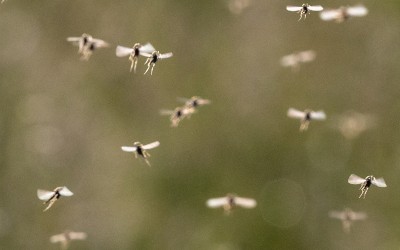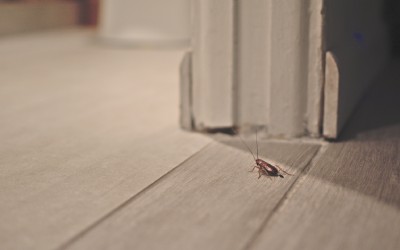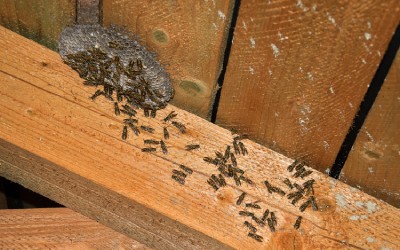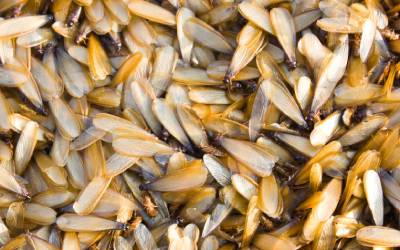Ah, Spring in North Carolina! Warm weather, sunshine… and swarming insects. The warmth and humidity of spring in Moore County draws many species of insects out of their winter habitats to feed and breed. Many of these insects are merely a nuisance but some of them are potentially dangerous to people or harmful to property. Learn which insects to watch for, what you can do to protect yourself and your home, and how Aberdeen Exterminating can help if these precautions aren’t enough.
Which Bugs Swarm in Spring?
Many bugs are known to swarm in spring but these are some of the most common or problematic swarming bugs in Moore County:
Bees: If bees are swarming on your property, they’re likely seeking food and shelter. Watch for the construction of bees’ nests in trees or on the eaves of your home. Carpenter bees can be especially concerning. They’re large, solitary bees often seen hovering near wooden structures in spring. They are important pollinators but can cause damage to wooden structures. They drill holes in wood to make their nests, which is how they get their name.
Ladybugs: Ladybugs are a type of beetle that is often seen in large numbers in spring. They are beneficial insects that help control aphids and other garden pests.
Lovebugs: Lovebugs are a type of fly known for their distinctive mating swarms. They are typically found in the southeastern United States, including North Carolina.
Moths: Several species of moths, including the white-lined sphinx moth and the eastern tent caterpillar, are known to swarm in spring in Moore County
Stinkbugs: Stinkbugs are a common insect in Moore County and can be seen swarming in spring. While they are not harmful to humans, they can be a nuisance in large numbers.
Termites: Termites begin swarming in the early spring months to establish new colonies. When termites are mating, you’ll typically find wings on the ground because termites shed their wings when they mate. If mating is happening on your property, then you are at risk of a termite infestation if you don’t already have one.
Wasps: In the warmer months, the queen will come out of hibernation and begin looking for food. If you see wasps flying low to the ground in your yard, they are likely looking for grubs, larvae, or insects for the queen or her brood.
How to Keep Swarming Insects Away
Be careful with food and drink outside
When the weather heats up, so do our grills! Bees and especially wasps are attracted to protein-rich foods like the meat you or your neighbors will be cooking. They’re also attracted to sugary drinks. To keep bees and wasps from making an uninvited appearance at your picnic or BBQ, be sure to seal up leftovers promptly and keep any sugary drinks sealed or covered.
Clean up debris in your yard
To keep insects away, you’ll want to keep your yard clear of any kind of debris that could be a habitat for insects, including leaves, sticks and any fruit that may fall from fruit trees. Keeping your lawn mowed short can also help. Stack firewood, ideally off the ground, away from buildings, and covered by a tarp.
Prevent water from collecting on your property
Many different types of pests are attracted to water, either for breeding or for drinking. There are many items in our yards that can easily fill with water given how stormy spring in Moore County can be. Whether it’s a birdbath, an empty bucket, a flower pot or a trash can lid, try to prevent water from accumulating in any objects on your property.
Expert Pest Control in Moore County
At Aberdeen Exterminating we provide comprehensive pest control services to help keep insects away from your home in the spring and all year round. Don’t suffer through another season of not being able to enjoy your outdoor space. Contact us today for a free quote.




